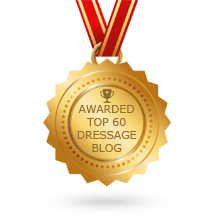|
de la Guérinière
M. de la Broue, and after him the Duke of Newcastle, say that in order to have a good hand, it must be light, gentle and firm. This state does not proceed solely from the action of the hand, but principally from the seat of the rider; for when the body is unbalanced or askew, the hand cannot be in its proper position, and the rider concerns himself primarily with keeping his seat. Furthermore, the legs must act in consonance with the hand, otherwise the effect thereof will never be correct; such consonance is called, in the terminology of the art, accord of hand and heel, which is the perfection of all aids Kurt Albrech Reins and legs can never compensate for an incorrect placement of the rider’s weight! G.Steinbrecht The skill of the hand can justifiably be considered a measure of the rider’s total skill. It is completely erroneous to believe that good hands could be an isolated favourable characteristic of some riders. Rather, they are the result of a perfect seat and fine feeling. G.Steinbrecht If the rider artificially applies more weight, the stirrup aid results which has become indispensable for all driving aids. It becomes a major fault if it is used to hold onto the stirrups in order to prevent their loss, or if it becomes a support for the seat. Riders who make such an error are still lacking in the fundamentals of their art, and they must first perfect their seat, and particularly their balance. de la Guérinière Elegance on horseback consists of a straight and free position as a result of a well balanced body: as a result the rider maintains, during all the movements the horse makes, without losing his seat, as much as he is able to, in an appropriate balance, an air of comfort and freedom, which makes him an elegant rider. Nuno Oliveira You must relax your waist and your back to go with the back of the horse and keep your bottom in the saddle. William Cavendish Now a good Seat is of such Consequence, as you shall see hereafter, that it is One of the chief Things maketh a Horse go perfectly; the very Manner of sitting being almost beyond all other Helps There are several factors that will contribute to a horse being unbalanced, and it is important for the rider to recognise the reasons behind the balance problems so they can choose the most appropriate exercise to correct the difference and develop the horse’s straightness. Most riders are familiar with horses being naturally one side and will turn more easily one way than the other, but there are other factors that influence a horse’s balance and what that horse will ultimately be able to achieve. Conformation contributes greatly to this. A horse who has a large shoulder and thick set neck with quarters and hind legs that are a relatively small in comparison will have a different frame to a horse with a thin neck and shoulder and a more powerful hind end. Horses who are short coupled will generally find the collected movements easier than a horse with a long back, but the extensions may not be as expressive. However, conformation is not the whole story; the way a horse moves is equally important. I have seen horses with less than ideal conformation transform when they move just because the use themselves well. Another equally important consideration is the work they have been doing. A horse just off the race track will have very different schooling needs to a horse that has been used for light hacking. So how does this translate to you and your horse? Take some time out to look at how your horse is made, how he moves and what his life story is; it may provide you with the training direction you are looking for. I’ve blogged previously about what you can do to improve your horse’s balance and straightness, so do read through those posts if you’re looking for tips and exercises to incorporate into your training. © Training Riders, Transforming Horses
|
AuthorDiane Followell Classical Dressage Trainer 
|
Telephone+44 (0)7931551014
|
|
© Diane Followell 2015 -2024.
All Rights Reserved.
All images and content are copyright Diane Followell unless otherwise stated.
All Rights Reserved.
All images and content are copyright Diane Followell unless otherwise stated.

 RSS Feed
RSS Feed

